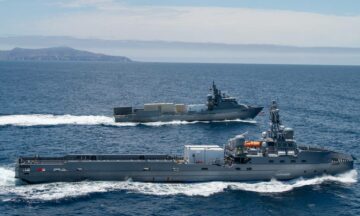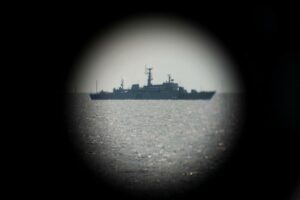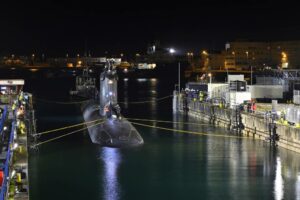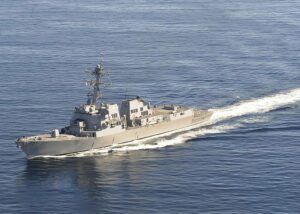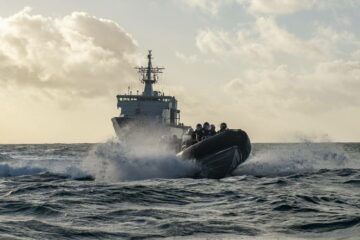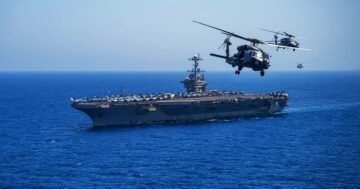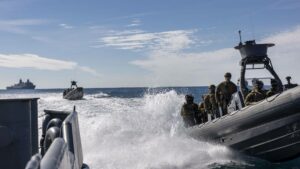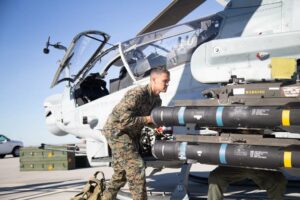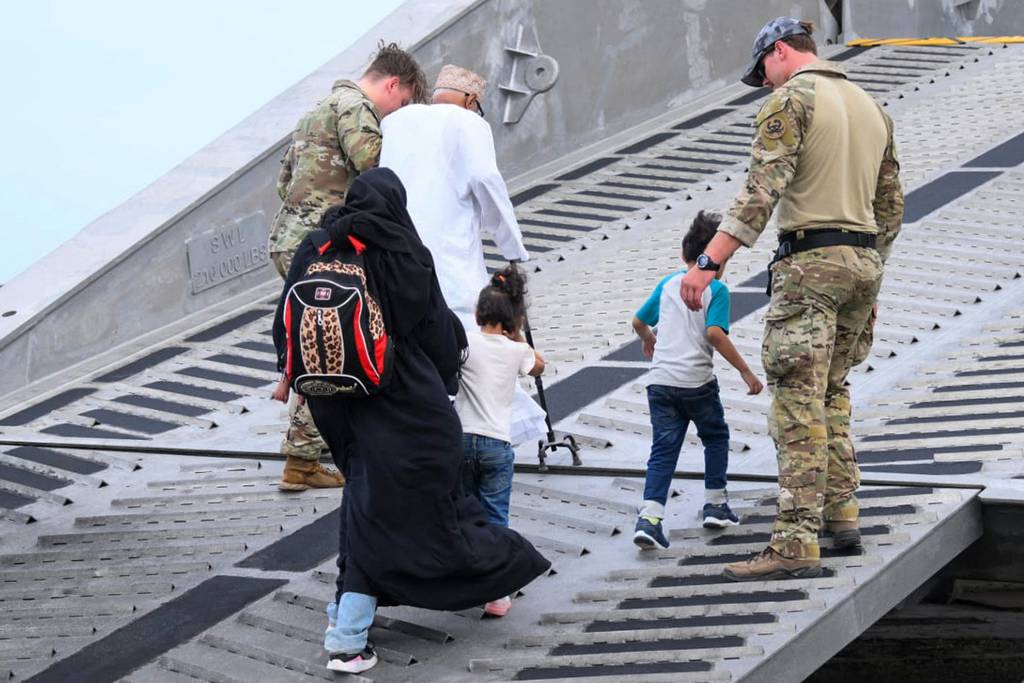
NEO stands for noncombatant evacuation operation, and we are seeing one unfold before our eyes on the evening news this week. As these events take place in Sudan and off the eastern coast of Africa, I was encouraged to see USNS Brunswick alongside in the Port of Sudan ferrying Americans to a safe haven and follow-on passage via Jeddah in Saudi Arabia.
Unfortunately, this ship is an expeditionary fast transport that serves as an ocean-going ferry for limited transport of personnel or equipment. A similar type of vessel, the former USNS Swift, which was transferred to the United Arab Emirates and engaged in humanitarian missions, was hit by a cruise missile in these same waters in 2016. These waters are hazardous. It is reassuring that the expeditionary sea base Hershel “Woody” Williams and the destroyer Truxton are also supporting the Sudan mission.
While it is good to have a U.S. presence available for evacuation of civilians from Sudan, ordinarily an operation like this would involve an expeditionary strike group, or ESG, made up of three big-deck amphibious ships: one light helicopter assault ship, one landing platform dock ship and one landing ship dock. Loitering off the coast, an ESG brings the president of the United States and the combatant commander multiple employment options. Humanitarian lift operations can be conducted via air, land or sea. In the event of hostilities, the kit bag of an ESG includes armed, fixed-wing and rotary aircraft that can enter a nonpermissive or hostile environment, suppress fires, pick up personnel, and deliver them to safety.
In the case of violence in Sudan, these options were unavailable. The problem is both one of readiness and inventory.
The Navy and Marine Corps have studied the question on the correct number of amphibious ships for several years now, and there seems to be consensus among those armed services that the correct number is 31 big-deck amphibious ships. The problem in getting to and sustaining that number does not reside inside the Navy or the Marine Corps, but rather with the Office of the Secretary of Defense, which does not embrace the value of the amphibious warship in 21st century warfare.
While I would agree it is unlikely we will see another Iwo Jima- or Inchon-like amphibious invasion in the near or distant future, expeditionary strike groups and amphibious warships provide much in terms of capability to include forward presence and showing the flag; humanitarian assistance and disaster relief; noncombatant evacuation operations; delivery of combat capability ashore with massive sealift and airlift capacity; and a mobile Level 2 surgical hospital facility. Ad hoc groups such as the one currently assembled do not deliver the same set of options.
During Exercise Trident Juncture in 2018 — at the time considered the largest NATO exercise since the end of the Cold War, with about 50,000 participants; 65 ships; 250 aircraft of various types; and 10,000 vehicles — the ability to lift a Marine expeditionary unit from Camp Lejeune, North Carolina, to the fjords of Norway in response to a simulated attack by the Russian Federation was made possible by the U.S. Navy’s Iwo Jima Expeditionary Strike Group. About 8,500 U.S. Marines participated in this exercise to augment allies and partners in an Article 5 operation that enabled operations in the air, from the sea and on the land.
During my time as commander of Naval Forces Europe and Naval Forces Africa, there was a constant demand signal, blessed by the combatant commanders, for a permanent presence of an expeditionary strike group in the Mediterranean. In lieu of a permanent presence, the commanders now receive transient presence, which occurs when the ESG (or other platforms) stop and operate in theater for a few weeks, vice a six-month deployment rotation.
As a result, we have the situation that we are watching now in real time. Last week, the commandant of the Marine Corps testified before the House Armed Services Committee that he felt he had “let down the combatant commander.” He was referring to fellow Marine Gen. Michael Langley — the current leader of U.S. African Command — and the Navy and Marine Corps’ inability to generate an expeditionary strike group with a Marine expeditionary unit to conduct more than one mission in the last six months — earthquake relief in Turkey and Syria, plus the outbreak of violence between warring factions in Sudan, with American citizens caught in the crossfire.
There is a simple solution, and that is to permanently deploy an expeditionary strike group in the Pacific theater and another in the Europe, Africa and Central commands’ areas of responsibility, 24/7 and 365 days of the year. In doing so, there would be no need to drive American citizens roughly 500 kilometers from Khartoum to Port Sudan in the middle of a combat zone. The Marine expeditionary unit and the organic lift on the strike group can do this from the sea.
While we may have dodged a bullet this time, the conflict is nowhere near over. And like Afghanistan, we will continue to hear of the plight of Americans and dual citizens who are caught up in the fray for the foreseeable future.
Retired U.S. Navy Adm. James G. Foggo is the dean for the Navy League’s Center for Maritime Strategy. He previously served as commander of Naval Forces Europe and of Naval Forces, Africa.
- SEO Powered Content & PR Distribution. Get Amplified Today.
- PlatoAiStream. Web3 Data Intelligence. Knowledge Amplified. Access Here.
- Minting the Future w Adryenn Ashley. Access Here.
- Source: https://www.defensenews.com/opinion/commentary/2023/05/03/evacuating-sudan-an-amphibious-gap-and-missed-opportunity/
- :is
- :not
- $UP
- 000
- 10
- 2016
- 2018
- 2023
- 30
- 50
- 500
- 70
- 8
- a
- ability
- About
- Ad
- AFGHANISTAN
- africa
- African
- AIR
- aircraft
- alongside
- also
- American
- Americans
- among
- an
- and
- Another
- April
- Arab
- ARE
- areas
- armed
- article
- AS
- assembled
- Assistance
- At
- attack
- available
- bag
- base
- BE
- before
- between
- blessed
- both
- Brings
- but
- by
- Camp
- CAN
- Capacity
- case
- caught
- Center
- central
- Century
- Citizens
- civilians
- Coast
- cold
- combat
- committee
- Conduct
- conducted
- conflict
- Consensus
- considered
- constant
- continue
- correct
- crossfire
- cruise
- Current
- Currently
- Days
- Defense
- deliver
- delivery
- Demand
- deploy
- deployment
- disaster
- Disaster Relief
- Distant
- do
- Dock
- does
- doing
- down
- drive
- Earthquake
- eastern
- embrace
- emirates
- employment
- enabled
- encouraged
- end
- engaged
- Enter
- Environment
- equipment
- ESG
- Europe
- evening
- Event
- events
- Exercise
- Eyes
- Facility
- factions
- FAST
- Federation
- fellow
- few
- fires
- For
- Forces
- foreseeable
- Former
- Forward
- from
- future
- gap
- Gen
- generate
- getting
- good
- Group
- Group’s
- had
- Have
- he
- hear
- helicopter
- Hit
- Hospital
- House
- HTTPS
- Humanitarian
- i
- image
- images
- in
- inability
- include
- includes
- invasion
- involve
- IT
- jpg
- kit
- Land
- landing
- largest
- Last
- leader
- Level
- light
- like
- Limited
- made
- Marine
- Maritime
- massive
- May..
- Mediterranean
- Michael
- Middle
- Mission
- missions
- Mobile
- months
- more
- much
- multiple
- Near
- Need
- news
- no
- North
- north carolina
- Norway
- now
- number
- of
- off
- Office
- on
- Onboard
- ONE
- operate
- operation
- Operations
- Opportunity
- Options
- or
- organic
- Other
- our
- outbreak
- over
- Pacific
- participants
- participated
- partners
- permanent
- permanently
- Personnel
- pick
- Place
- platform
- Platforms
- plato
- Plato Data Intelligence
- PlatoData
- plus
- possible
- presence
- president
- previously
- Problem
- provide
- rather
- real
- real-time
- reassuring
- receive
- relief
- response
- responsibility
- result
- roughly
- russian
- russian federation
- s
- safe
- Safe Haven
- Safety
- same
- Saudi
- Saudi Arabia
- SEA
- secretary
- see
- seeing
- seems
- serves
- Services
- set
- several
- ships
- Signal
- similar
- Simple
- since
- situation
- SIX
- Six months
- So
- solution
- stands
- States
- Stop
- Strategy
- strike
- studied
- such
- Sudan
- Supporting
- surgical
- SWIFT
- Syria
- Take
- terms
- than
- that
- The
- Theater
- Them
- There.
- These
- this
- this week
- those
- three
- time
- to
- transferred
- transport
- Turkey
- type
- types
- u.s.
- U.S. Navy
- unit
- United
- United Arab Emirates
- United States
- value
- various
- Vehicles
- Vessel
- via
- war
- was
- watching
- Waters
- we
- week
- Weeks
- were
- when
- which
- WHO
- will
- Williams
- with
- would
- year
- years
- zephyrnet

